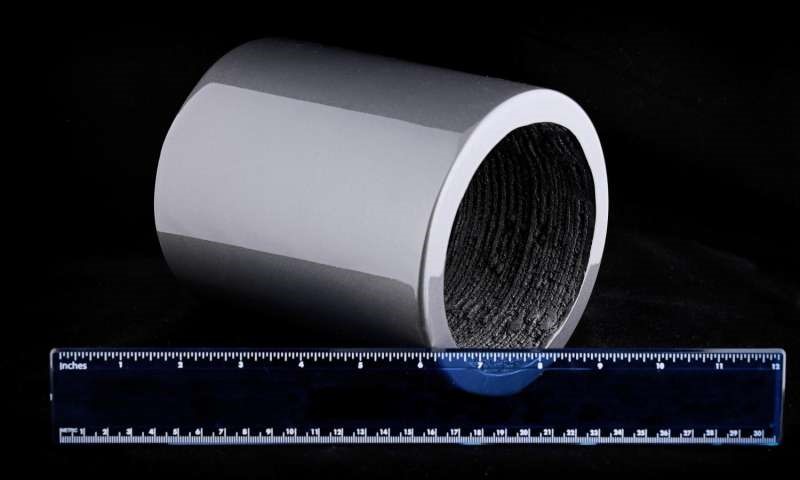
Ongoing research at the Department of Energy’s Oak Ridge National Laboratory yields 3D-printed permanent magnets that outperform bonded magnets built using traditional techniques, while also conserving critical materials.
Using a Big Area Additive Manufacturing (BAAM) machine on site at the DOE's Manufacturing Demonstration Facility at ORNL, scientists fabricated near-net-shape, neodymium-iron-boron (NdFeB) bonded magnets with comparable or better magnetic, mechanical, and microstructural properties than bonded magnets. The sintered pellets consisted of 65 volume percent isotropic NdFeB powder and 35 percent polyamide (Nylon-12) manufactured by Magnet Applications Inc.
The research published in the journal Scientific Reports outlines a method of sintered magnet manufacturing that results in 30 to 50 percent less material waste than conventional means. By capturing and reusing castoff materials, net waste may be reduced to nearly zero, states Parans Paranthaman, principal investigator and a group leader in ORNL's Chemical Sciences Division.
Outside of the economic benefits of conserving material, the printing process produces complex shapes at a faster rate than traditional injection methods and requires no tooling because computer-assisted design eliminates the need to build a new mold from the ground up as seen in traditional injection molding. “Manufacturing is changing rapidly, and a customer may need 50 different designs for the magnets they want to use,” said ORNL researcher and co-author Ling Li.
Possessing the ability to print high-strength (NdFeB) magnets in a variety of complex shapes opens up multiple new possibilities in the design of efficient electric motors and generators. Electric motors made with rare earth magnets are more efficient than electric motors made without magnets, which must use supply current from their power source to induce magnetism. Permanent magnet machines require zero magnetizing currents, so their efficiency remains higher than machines that use AC induction and no magnets.
At the same time, conserving excess material during fabrication is equally important, given no industrial recycling for permanent magnets is available in western countries.
With a scalable foundation in place for fabricating magnets, scientists will transition into exploring the printing of anisotropic, or directional, bonded magnets—magnets that are stronger than isotropic magnets that have no preferred magnetization direction. Also to be examined are the effects of binder type, loading fraction of magnetic powder, as well as the processing temperature on the magnetic and mechanical properties of printed magnets.
Source: Phys.org
Advertisement
Learn more about Electronic Products Magazine





